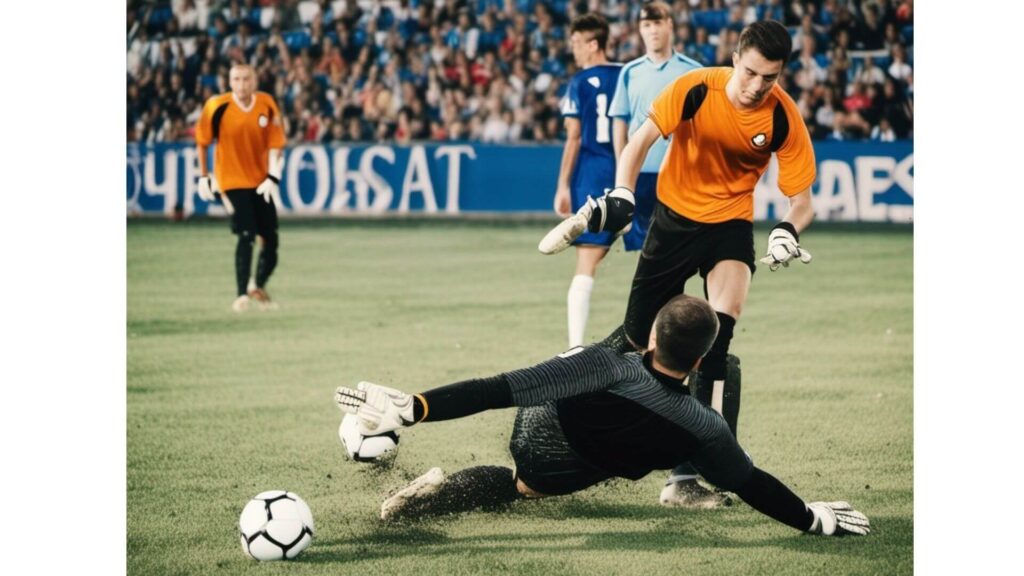Title: Mastering Timing in Soccer: The Key to Winning Matches
Welcome to the world of soccer, where precision and timing can be the difference between victory and defeat.
In this post, we will delve into the intricacies of timing in soccer and explore how it can elevate your game to new heights.
Whether you’re a player, coach, or passionate fan, understanding the significance of timing will enable you to make smarter decisions on and off the field. So, lace up your boots, grab a ball, and let’s uncover the secrets to mastering timing in soccer.
Clarification: Note that in this article, when we refer to “timing,” we are focusing on the strategic and coordinated aspects of timing movements, passes, tackles, shots, headers, and set pieces in soccer.
We are not discussing timing in terms of the clock or timekeeping. It’s crucial to understand that timing in soccer refers to the precision and synchronization of actions rather than measuring time.
So, let’s dive into the fascinating world of timing movements on the soccer field and explore how it can significantly impact the outcome of the game.
What does Timing mean in Soccer/Football?
Timing in soccer refers to the strategic synchronization of movements, passes, tackles, shots, and set pieces. It’s about anticipating and executing actions at the right moment to gain an advantage over opponents and create scoring opportunities.
1. Timing Off the Ball
One of the fundamental aspects of soccer is making runs off the ball. The ability to time your movement and create space can catch opponents off guard and open up scoring opportunities.

Instead of mindlessly sprinting, analyze the play, anticipate passes, and make decisive runs at the right moment.
Timing your movements effectively not only confuses defenders but also allows your teammates to find you with accurate passes. Remember, the art of timing is as much about patience as it is about speed.
2. Timing Passes and Through Balls
A well-executed pass can change the entire dynamic of a game. Mastering the timing of your passes requires vision, awareness, and an understanding of your teammates’ strengths and preferences.
Analyze the movements of your teammates, anticipate their runs, and deliver the pass at the precise moment when they are best positioned to receive it.
Timing is not just about the speed and accuracy of the pass but also about the synchronization between the passer and the receiver.
You can also read my article about teamwork in soccer here.
3. Timing Tackles and Defensive Actions:

Timing is equally crucial in defensive scenarios. Knowing when to make a tackle or interception can prevent opponents from gaining an advantage.
Rushing into challenges haphazardly often leads to fouls or mistimed tackles.
Instead, observe the attacking player’s movements, anticipate their actions, and time your tackle with precision.
Patience and anticipation are key elements in mastering the art of defending through well-timed interceptions and tackles.
4. Timing Shots and Headers
In soccer, the ability to time your shots or headers can turn a match in your favour. Strikers who can anticipate the flight of the ball, adjust their body position, and execute a well-timed strike are more likely to find the back of the net.
Whether it’s a volley, a header, or a long-range shot, practice timing your contact with the ball to generate maximum power and accuracy.
Remember, a fraction of a second can be the difference between a goal and a missed opportunity.
5. Timing Set Pieces
Set pieces, such as corners and free kicks, provide excellent opportunities to score goals.
Timing your runs into the box is crucial for both attackers and defenders. Attackers must time their movements to connect with the ball at the right moment, while defenders need to anticipate the attackers’ runs and position themselves to defend effectively.
Spend time on the training ground studying your team’s set-piece routines and perfecting your timing to maximize your chances of success.
6. Timing in Counterattacks
Counterattacks are fast-paced and rely heavily on timing. Knowing when to initiate the attack, make decisive runs, and deliver killer passes can catch opponents off guard.
It requires quick thinking, awareness of spaces, and coordination with teammates to exploit gaps in the defense and create goal-scoring opportunities.
7. Timing in One-on-One Situations

When facing an opponent one-on-one, timing is crucial. Deciding the right moment to dribble past, make a tackle, or shoot can make all the difference.
Patience is key as timing your moves intelligently can create openings and increase the chances of success in one-on-one situations.
8. Timing in Pressing and Defensive Transitions
Effective pressing and defensive transitions rely on proper timing.
Players must coordinate their movements to apply pressure collectively, disrupt the opponent’s passing options, and regain possession.
Timing tackles, interceptions, and coordinated pressing can disrupt the opposition’s rhythm and quickly turn defense into attack.
9. Timing in Offside Trap Execution
The offside trap is a defensive strategy that requires precise timing.
Defenders must move in unison, stepping forward at the right moment to catch attacking players offside.
A mistimed trap can lead to a dangerous scoring opportunity for the opponent, emphasizing the importance of synchronization and awareness.
10. Timing in Penalty Kicks and Shootouts
Penalty kicks and shootouts often come down to split-second timing.
Both the shooter and the goalkeeper must anticipate and react swiftly.
Shooters aim to deceive the goalkeeper by delaying their shot or striking at the perfect moment, while goalkeepers must time their dive to make the crucial save and determine the outcome.
11. Timing in Goalkeeper Saves and Diving

Goalkeepers rely on impeccable timing to make crucial saves. Determining the right moment to dive, the angle to cut off, and the extension of the arms requires split-second decision-making.
Perfecting timing through practice and reading the opponent’s body language helps goalkeepers make those game-changing saves.
12. Timing in Substitutions and Tactical Changes
Timing substitutions and tactical changes can greatly impact a game. Coaches need to assess the flow of the match, anticipate critical moments, and make timely adjustments to personnel or formations.
A well-timed substitution or tactical alteration can shift momentum and provide a strategic advantage.
13. Timing in Crosses and Aerial Duels
Timing is essential when it comes to crosses and aerial duels. Delivering an accurate cross at the right moment allows attackers to time their runs and connect with the ball effectively.
Defenders must anticipate the trajectory and timing of crosses to position themselves optimally for clearing or challenging in aerial duels.
14. Timing in Overlapping Runs and Underlapping Movements
Fullbacks executing overlapping runs or underlapping movements must time their surges forward to provide width and attacking options.
Coordinating with teammates, recognizing when to make the run, and judging the timing to receive a pass or create space in the opponent’s defense is crucial for success.
15. Timing in First Touch Control and Ball Manipulation
Mastering timing in first touch control and ball manipulation is vital for maintaining possession and creating opportunities.
Players must judge the speed, angle, and trajectory of the incoming ball, using their touch to control it effectively.
Proper timing ensures a clean first touch, allowing for quick passes, dribbles, or shots.
By the way, if you want to learn about timing in soccer as a clock, check out this guide by Rookie Road.
Conclusion
Timing in soccer is an art that requires practice, anticipation, and an understanding of the game. It is not just about individual actions but also about how players synchronize their movements to create a cohesive unit.
By mastering timing off the ball, passes, tackles, shots, headers, and set pieces, you can elevate your game and become a force to be reckoned with on the field.
Always keep in mind that timing is a skill that can be improved with practice and persistence. Embrace the challenge, gain knowledge from your previous experiences, and continuously strive to enhance your timing in all aspects of the game.
Therefore, when you step onto the field, let your impeccable timing be the key to your success in achieving soccer greatness.
You can also read Sportsmanship in soccer here.


